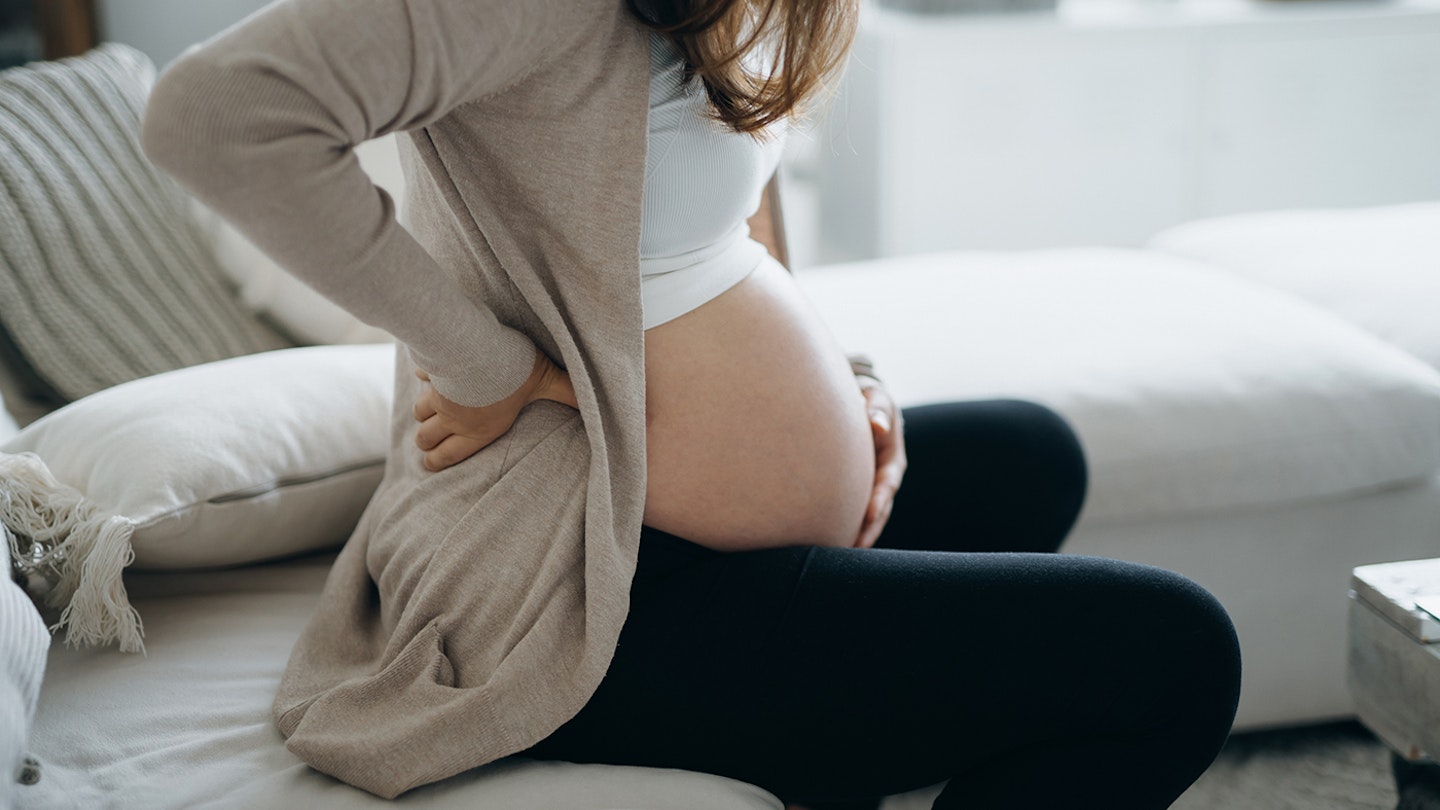Pregnancy can be a pretty painful and uncomfortable experience at times. Whether you've got puffed-up ankles like the Michelin man, backache, tender breasts and well, MORE backache from being hunched over the toilet with morning sickness, there are times when you just think, 'Give me a break!'
On top of all that, some women find that their pelvic region - anything from their groin to their hips and even their bum starts to hurt in the later stages of pregnancy (oh, the joy).
If you're expecting and are finding that your general baby-making area is hurting, then we fill you in on everything you need to know about SPD during pregnancy and what you can do about it.
What is SPD?
Symphysis Pubic Dysfunction (SPD) now more commonly known as Pelvic Girdle Pain (PGP), is when a pregnant woman experiences pain in her pelvic region.
What are the symptoms of SPD in pregnancy?
"The pain from SPD is commonly felt right in the centre of your pubic bone, but it can include any pain in the front, back or side of your pelvis and can even radiate to your thighs," explains midwife Beth Kitt, creator of The Bump to Baby Chapter. "The pain can be a dull ache to shooting pains and can vary on a spectrum to mild aches to extremely debilitating. The pain is there on movements such as walking, bending, standing on one leg such as when walking the stairs or even rolling over in bed."

What happens?
The condition is caused by the joints moving unevenly, meaning the pelvic girdle (the ring of bones around your body at the base of your spine), can become less stable. As your baby grows week-by-week, the weight gain and the change in your posture will put more strain on your pelvis, making this pain more noticeable. You are also more likely to suffer from SPD in pregnancy if you have previously suffered from back problems, have had a previous pelvic injury or if you have hypermobility syndrome.
"As well as this, when we get closer to our due date, our relaxin hormone increases, which soften the ligaments in the joints of our pelvis," Beth says. "This is great for birth as it means that our pelvis can move and widen to accommodate your baby travelling through. But, in pregnancy this softening of the ligaments can cause our pelvis to shift unevenly, and not be as well supported, causing the pain."
When should I seek help?
The sooner the better, Beth advises. "If you feel like the pain is affecting your day to day living then self refer to a physio for some help. The quicker it’s picked up the better it can be managed."
"SPD in pregnancy doesn’t always get worse in pregnancy but it doesn’t get better and is unlikely to go away until after your baby is born so get help from a physio," Beth adds.
As well as seeing a physio, seeing your GP is also a good idea if you need some medication for the pain. Remember ibuprofen isn’t recommended in pregnancy.
What treatment is available?
Whilst you wait to see a physio there are some things that you can do at home to help. The main thing is to keep your legs close together when you do day to day activities. For example, when you climb the stairs, take one step then meet your feet together before taking the next step, when you get out the car turn your legs out of the car together before you stand (sitting on a plastic bag can help with this) and when you get dressed avoid standing on one leg to put trousers on and sit down instead.
Your physio will most likely give you some exercises to do at home, potentially with an exercise ball and some manual therapy checking that your spine, pelvis and hips are moving normally. They may also recommend walking aids such as crutches or a TENS machine to manage the pain.
You could also see another professional that specialises in the treatment of PGP such as a chiropractor or osteopath.
<meta charset="utf-8">13 ways to relieve and treat pelvic pain in pregnancy:
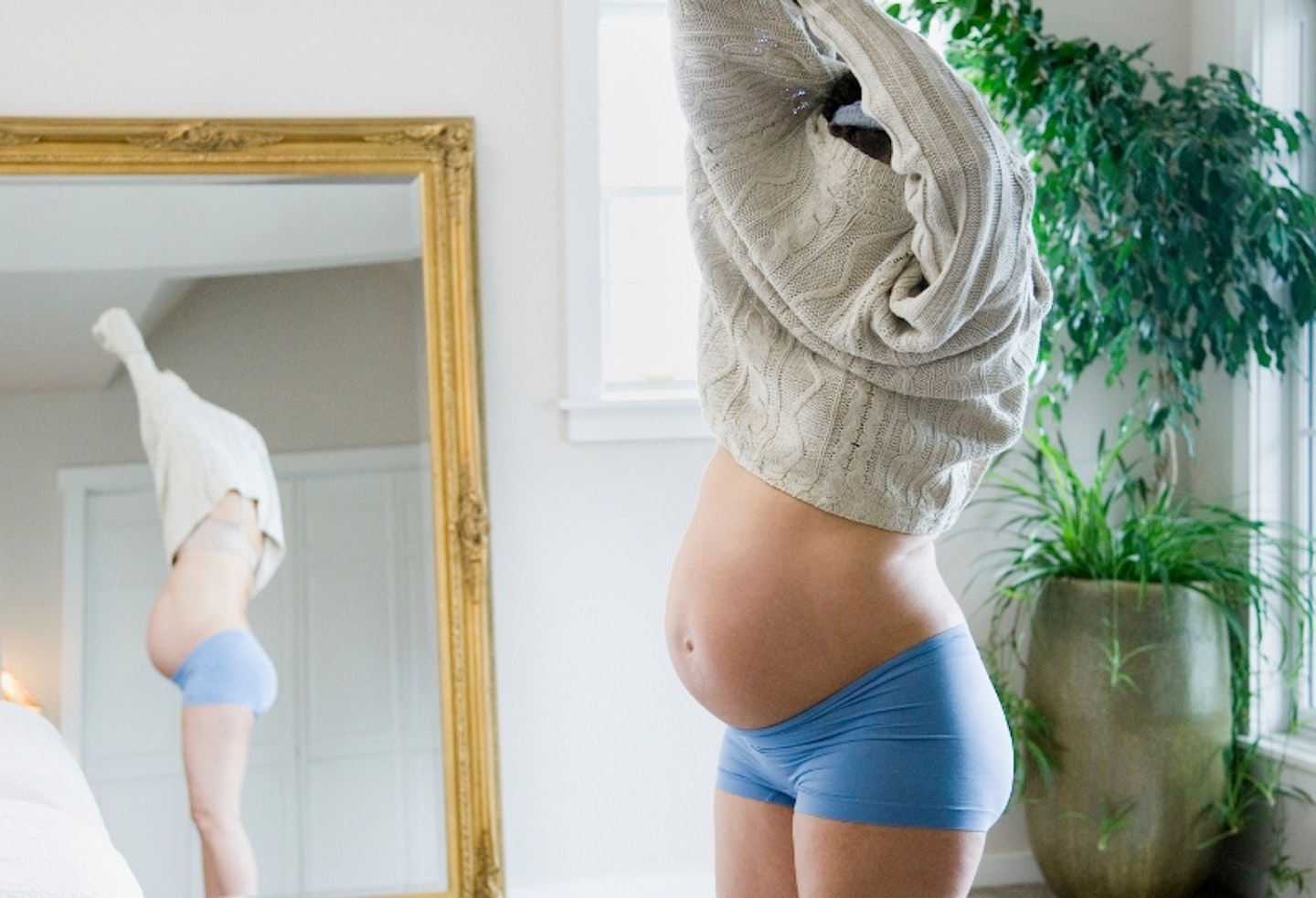 1 of 13
1 of 131) Sit down to get dressed
Pulling your jeans up, if you can bare to wear jeans when pregnant, while standing on one leg is an easy way to make your pelvic pain worse. Sit down on the end of the bed to make it easier for you!
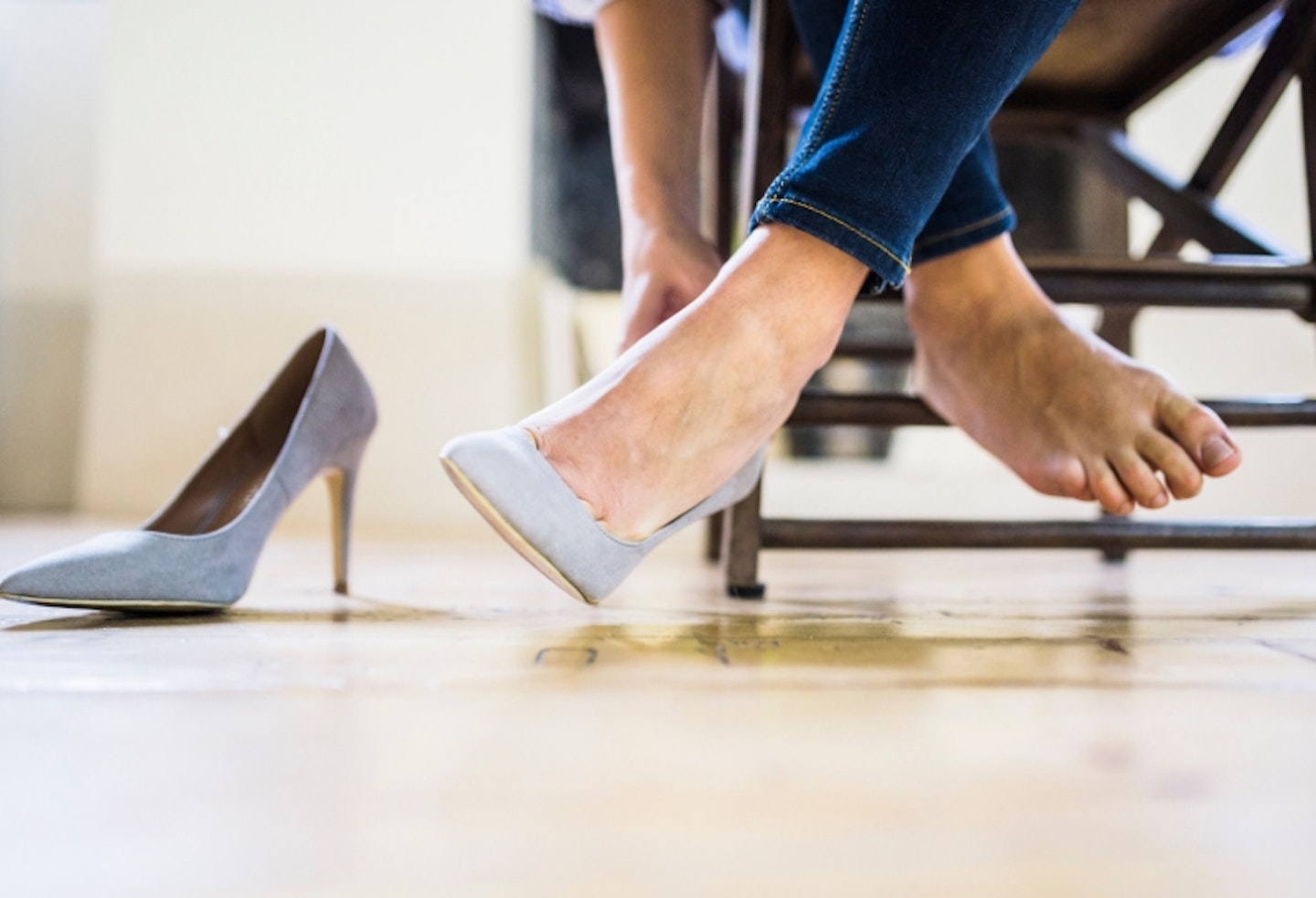 2 of 13
2 of 132) Comfortable shoes
Comfortable shoes are a pretty good idea during pregnancy anyway. Sadly, it makes sense to ditch the heels if you're suffering from pelvic pain, any other pregnancy joint-related symptoms or swelling.
 3 of 13
3 of 133) Knees together
Many pregnant women find that moving their knees/legs apart, when getting out of the car can make their pain worse. Keep those knees together and swivel out instead.
 4 of 13
4 of 134) Rest when you can
Rest is vital when you are an expecting mum-to-be. It cures everything! If your pelvic pain is flaring up, sit back, relax and pop your feet up - as long as that doesn't make your pain worse!
 5 of 13
5 of 135) Pregnancy pillow
Sleeping with a pregnancy pillow or putting an ordinary pillow between your legs can help to ease pelvic pain.
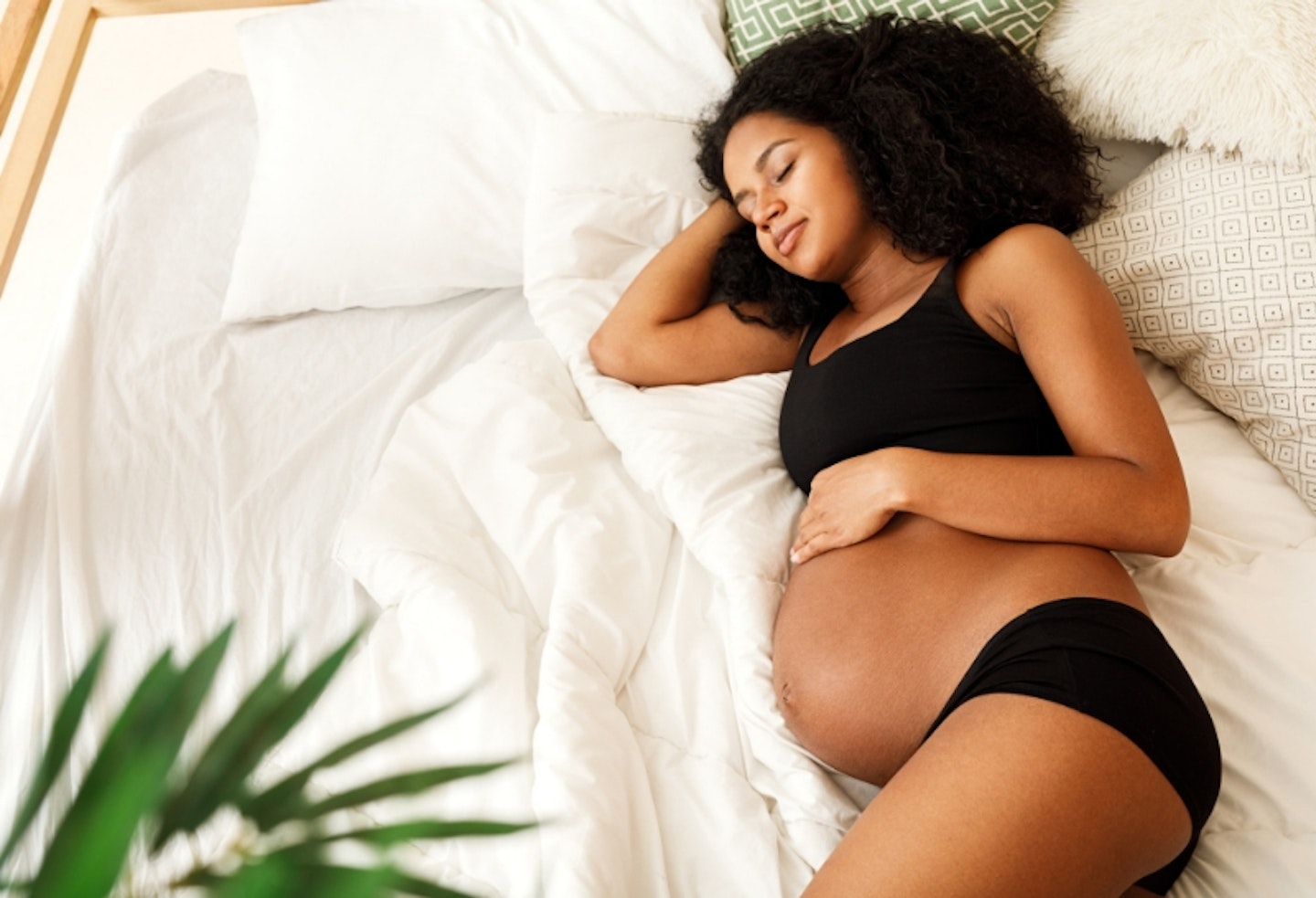 6 of 13
6 of 136) Tossing and turning
When you turn in bed, keep your knees together and squeeze your buttocks.
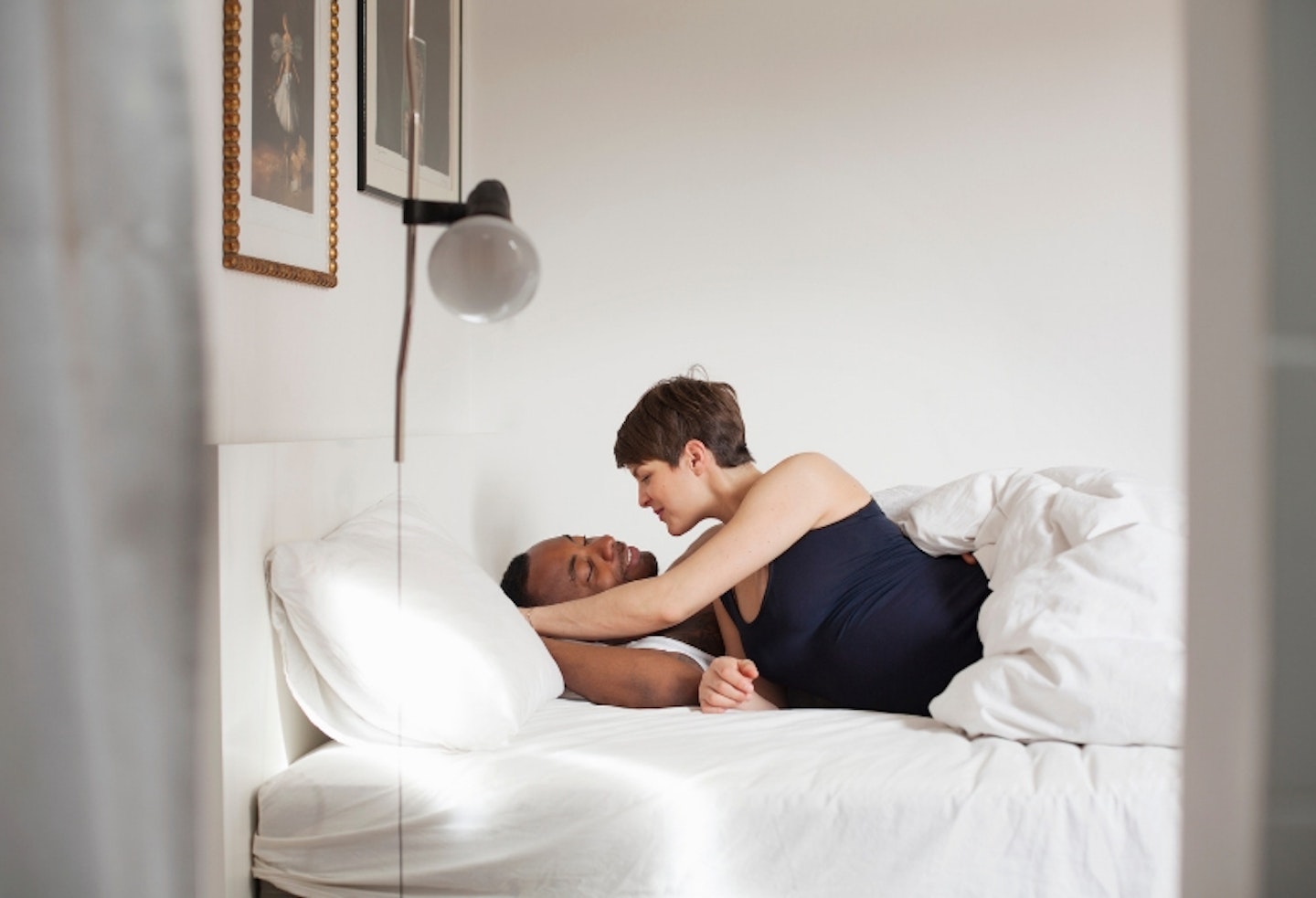 7 of 13
7 of 137) Sex position
If you want to have sex while pregnant, different positions, like being on all fours should help relieve pelvic discomfort.
 8 of 13
8 of 138) Stay active
Although certain exercise or activity during pregnancy could make your pelvic pain worse, staying active is important. A gentle walk is always a good idea to make you feel good and stretch those muscles and joints.
You can also do some pelvic floor exercises which will strengthen your pelvic area as well as your stomach, back and hips.
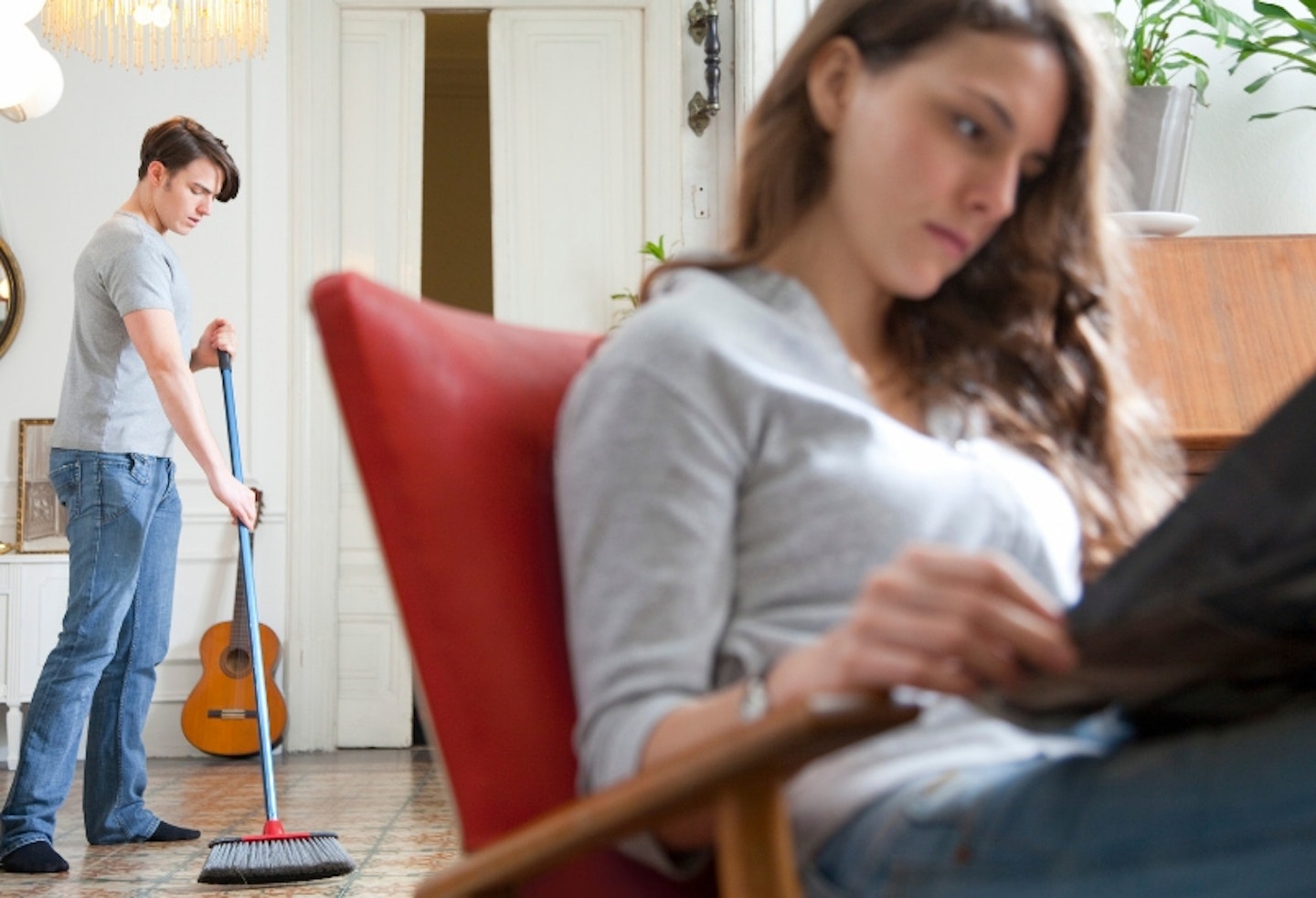 9 of 13
9 of 139) Get help
If your pelvic pain is going to make it hard for you to get around and complete household chores, ask for help! Get your partner, family or kids to give you a hand around the house.
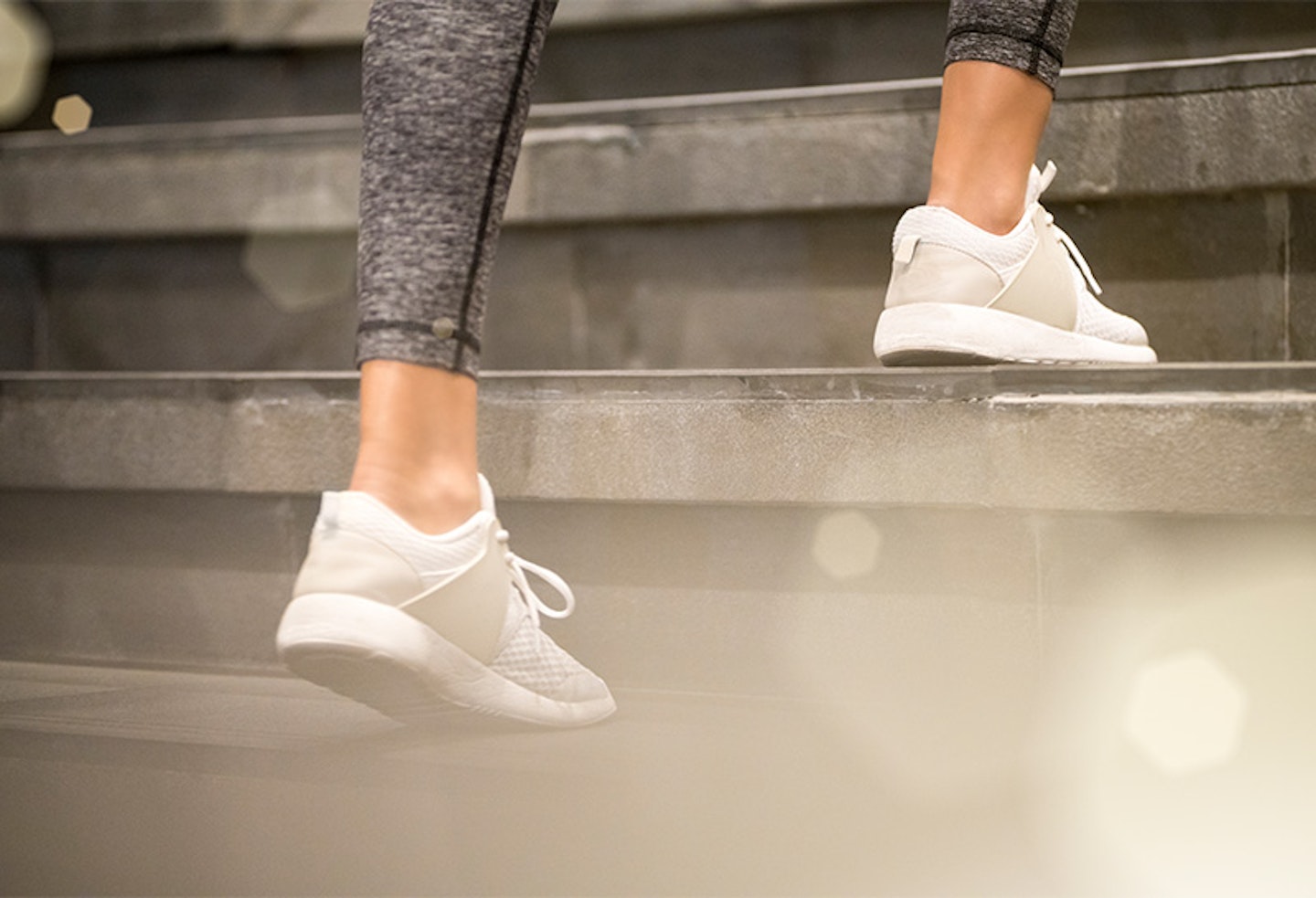 10 of 13
10 of 1310) One step at a time
Going up stairs can always cause your pelvic pain to flare up. If you normally bouce up the stairs with long strides, take it easy and take one step at a time!
 11 of 13
11 of 1311) Exercise in water
Sometimes exercise in water is recommended by your GP to help with pelvic pain. They can improve stability and are low impact on those precious joints.
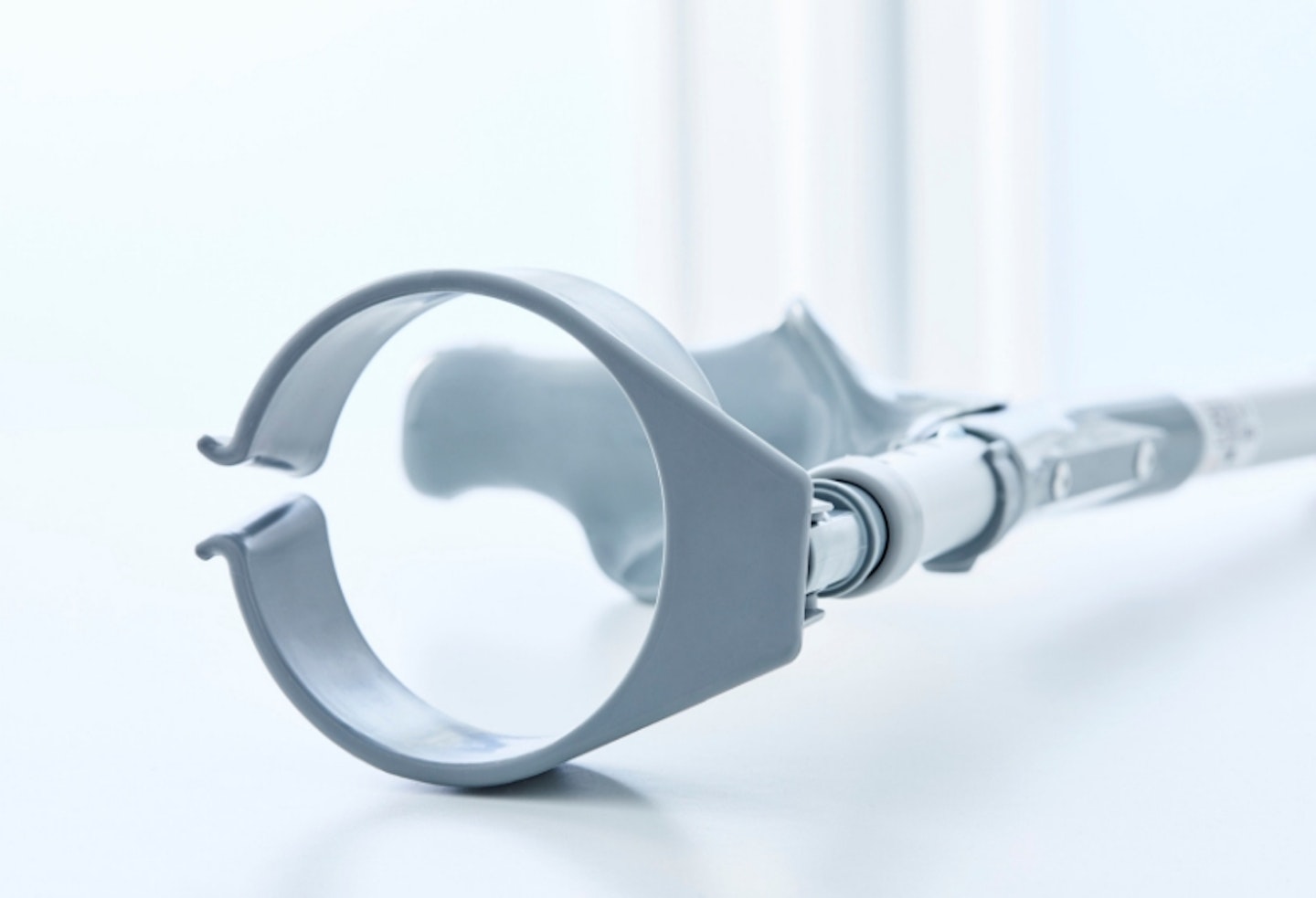 12 of 13
12 of 1312) Crutches
If your PGP is particularly bad, you may be given crutches to help you get around and to support the weight more easily.
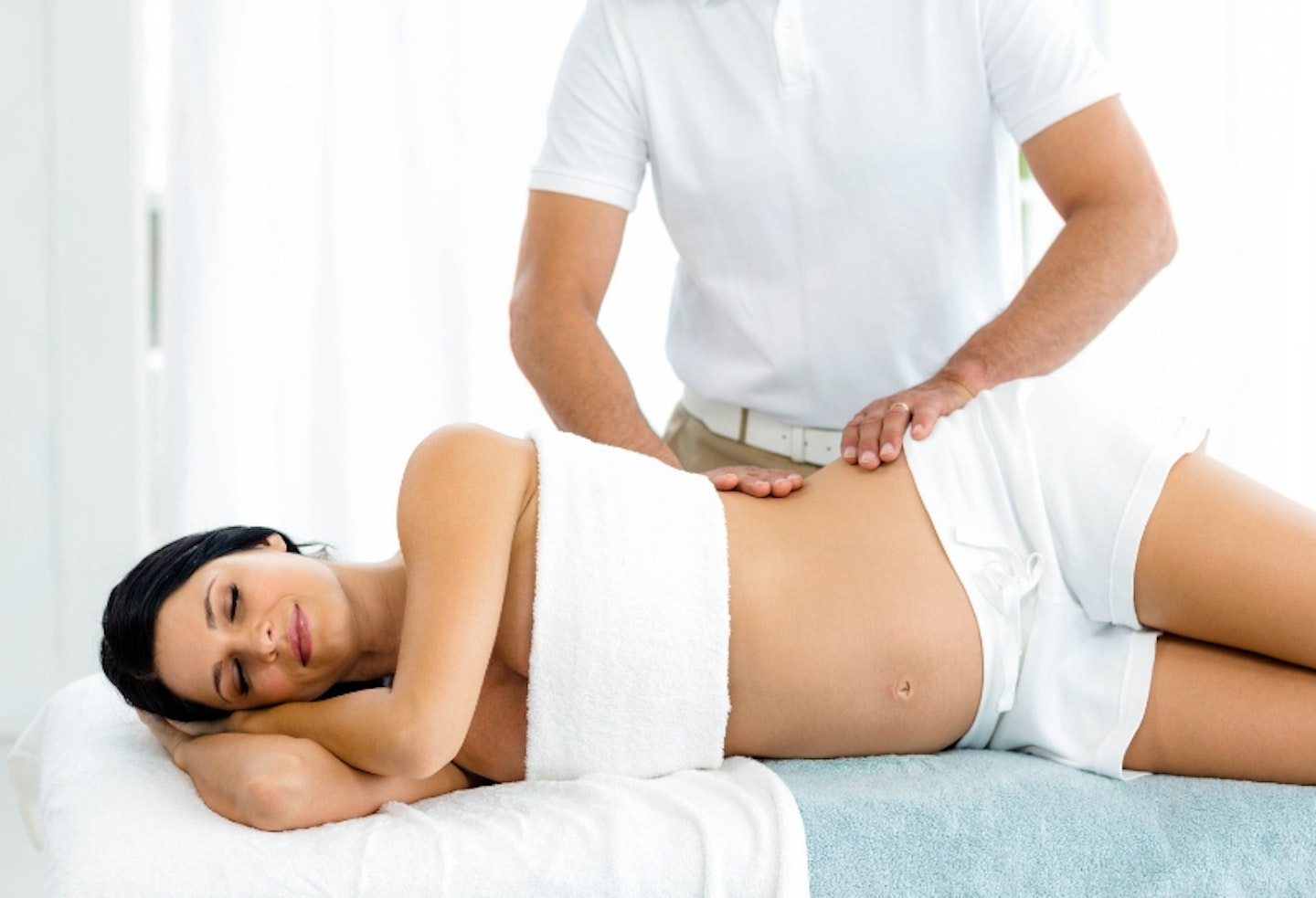 13 of 13
13 of 1313) Manual therapy
Manual therapies, like osteopathy can improve pelvic pain. Your GP may recommend you for treatment but if not and you do decide to go, ensure you go to a registered practitioner
Find your 'pain-free range of movement'
If you do have pain when you move your knees and legs then it is important you find out your 'pain-free range of movement'.
The NHS explains how to do this:
• Lie on your back or sit on the edge of a chair and open your legs as far as you can without pain.
• Your partner or midwife can measure the distance between your knees with a tape measure. This is your pain-free range.
• To protect your joints, try not to open your legs wider than this during labour and birth.
Finding this range is important for labour and birth. If you have an epidural as pain relief you will no longer feel pain so you need to make sure you are not separating your legs too far. Lying on your side may limit the separation of your legs and it is perfectly safe to give birth in this position if it is comfortable for you. If you do go beyond your pain-free range, you will need to be assessed after your birth.
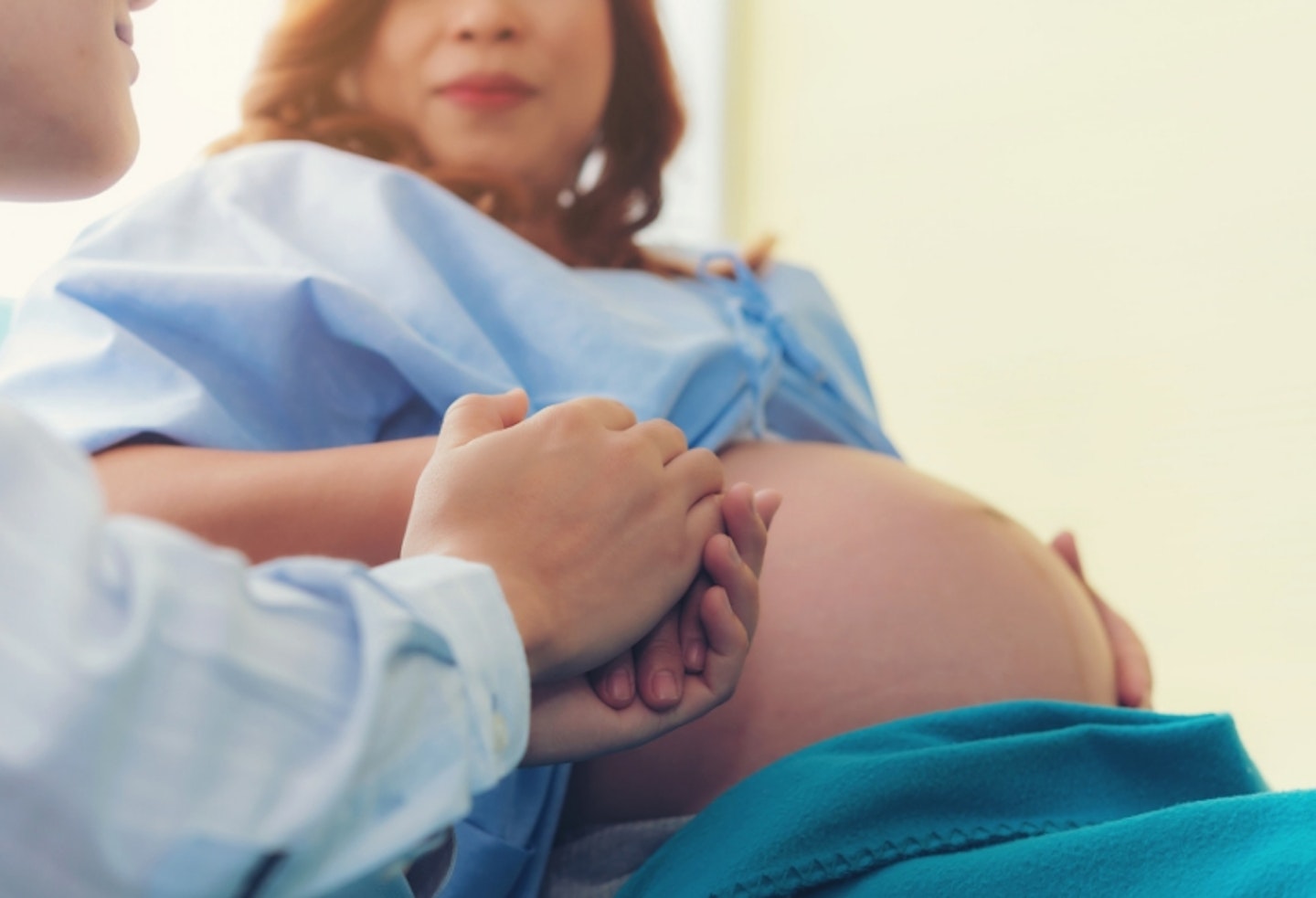
How does SPD affect labour and birth?
More often than not, pelvic pain does not prevent mothers from having a vaginal birth and does not necessarily mean they will have to have a caesarean. If you have been diagnosed with SPD, note it down in your birth preference, so that your midwives and those supporting you through your labour are aware of the condition and can treat you accordingly.
"The majority of women who have SPD are able to labour without their SPD causing too much bother," Beth reassures. "For those who have severe SPD, you may find that there are certain positions that won’t be comfortable for you such as squatting or on a birth stool. It may be that you want to avoid certain positions or have an active labour because standing and walking are too painful for you."
Many women are worried about labour contractions intensifying their SPD but often women find that this isn’t any worse in labour.
A water birth may also be beneficial for SPD sufferers. The birthing pool may help to ease the pain and support the weight of your body. Discuss this with your midwife as it is important you can get in and out of the pool easily.
How long does it take for SPD to go away after birth?
For the majority of women SPD goes away pretty much straight away after birth. For some women it can take a little longer than this. If you’re still experiencing discomfort a few weeks after baby then refer to your GP and/or physiotherapist.
Popular articles to read next
The best pregnancy support belts for maximum comfort during your pregnancy
